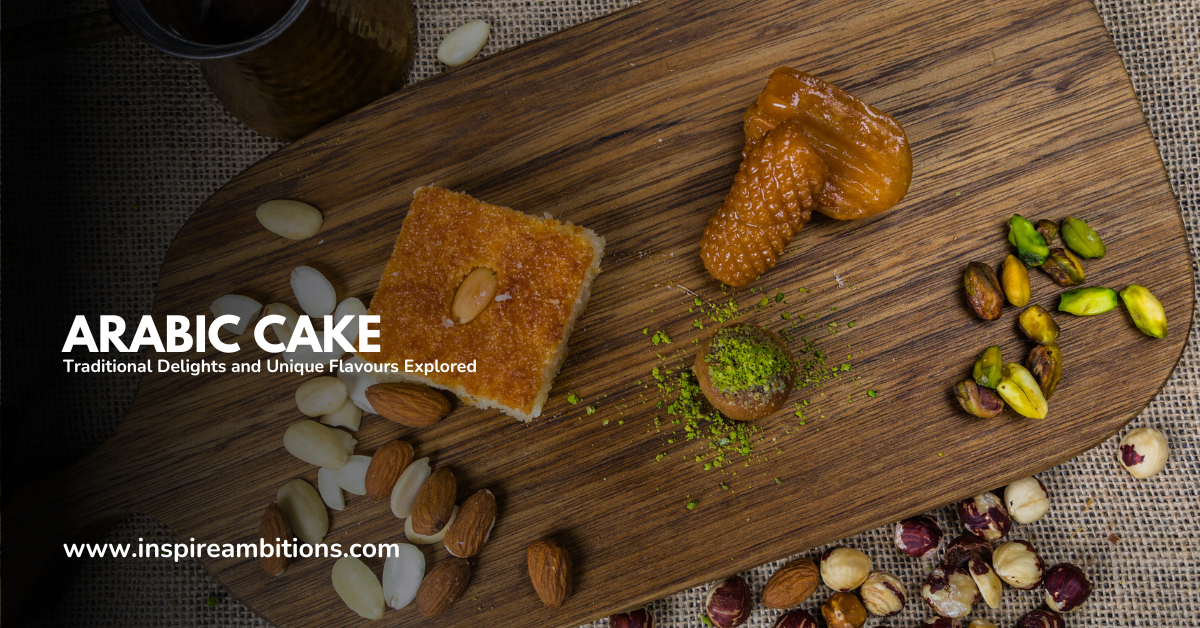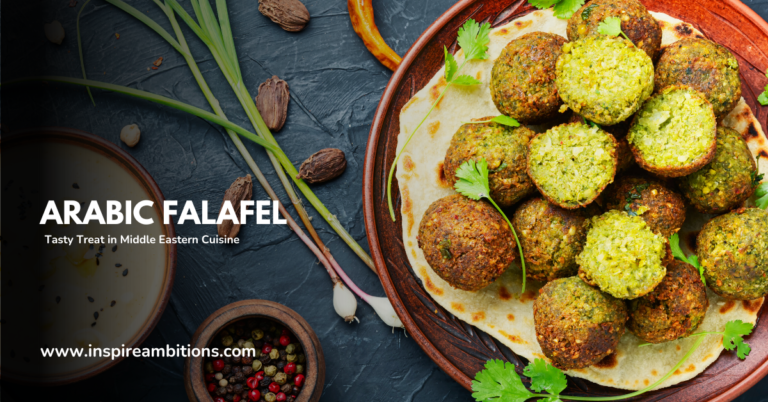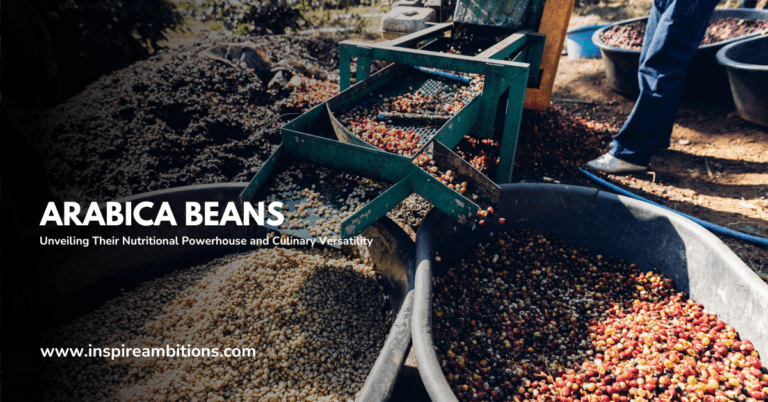Arabic Cake – Traditional Delights and Unique Flavours Explored
Arabic cakes are a delectable and fascinating aspect of Middle Eastern cuisine, offering a wide variety of flavours and textures to satisfy the most discerning sweet tooth.
Originating from various countries and regions within the Arab world, these desserts provide a perfect marriage between ancient culinary traditions and modern influences, creating unique flavour profiles found nowhere else.
As you delve into the world of Arabic cakes, you’ll discover an array of tempting treats like Basbousa, a semolina-based cake infused with coconut and sweetened syrup, or Harissa, a semolina cake adorned with almonds or pistachios.
While some Arabic cakes are dense and rich, others are sleek, light, and exquisitely flavoured. One key element that unites these desserts is the use of aromatic spices and embellishments such as rose water, cardamom, and saffron, which add depth and subtlety to each bite.
Exploring Arabic cakes is a delightful way to expand your culinary horizons and immerse yourself in the flavours and traditions of Arab culture.
Whether you’re a seasoned baker or just beginning your baking journey, there’s an Arabic cake to entice and mesmerize your taste buds. So, grab your apron and prepare to indulge in some of the finest sweet delicacies the world has to offer.
History of Arabic Cake
Let’s explore.
Origins
The history of Arabic cake can be traced back to ancient times, specifically to the Indus Valley between India and Pakistan.
One such Arabic cake, Basbousa, originated in Egypt and is made from a semolina batter, which is then soaked in either orange flower water, rose water or syrup and typically cut into a lozenge or square shape. Another sweet treat, Kahk, is a small circular biscuit eaten in Egypt and across the Arab world to celebrate Eid al-Fitr.
Evolution Over Time
Over time, Arabic cakes have evolved by incorporating new ingredients and methods of preparation. The introduction of sugar syrup by the Crusaders in the Middle East at the end of the 11th century significantly impacted the way these cakes were made.
Sugar syrup became an essential ingredient, adding a delightful sweetness to Arabic cakes that have become a hallmark of these desserts.
Moreover, Arabic cakes began to incorporate local flavours and ingredients, giving rise to a wide variety of flavours and textures. For example, the Moroccan Date Cake uses Morocco’s unique combination of flavours, resulting in a moist and fruity cake popularly enjoyed during afternoon tea time.
Regional Variations
As Arabic cakes spread across different regions, various adaptations and regional variations emerged. These variations led to the creation of unique offerings while maintaining the essence of the original recipe.
For instance, Basbousa is enjoyed across the Middle East and North Africa, with variations in sweetness and texture depending on the country and local preferences.
Similarly, Kahk enjoyed primarily in Egypt, is also prepared and consumed in different styles across the Arab world. In some regions, filling options such as nuts, spices, or honey are added, providing a delightful twist to the traditional recipe.
In conclusion, Arabic cake has a rich history rooted in ancient culinary traditions. From its origins in Egypt and the Indus Valley, it has transformed and evolved, ushering in a splendid variety of regional variations.
Its popularity continues to grow, and it has firmly highlighted the rich and diverse culinary culture of the Arab world.
Characteristics of Arabic Cake
Ingredients
Arabic cakes often use unique and aromatic ingredients that help create a distinctive taste. Some common ingredients in these cakes include:
- Dates: Dates are a staple ingredient in many Arabic desserts, including cakes, as they add natural sweetness and a chewy texture.
- Cardamom: This spice is frequently used to add a warm, sweet flavour to Arabic cakes.
- Almonds and nuts: Ground almonds are often incorporated into cake batters for added texture, and various nuts like pistachios and walnuts are used as toppings or garnishes.
- Saffron: Known as one of the world’s most expensive spices, saffron adds a subtle, luxurious taste and a vibrant colour to some Arabic cakes.
- Rosewater and orange blossom water: Floral waters like rosewater and orange blossom water are used to enhance the scent and flavour of Arabic cakes.
Baking Techniques
Arabic cakes primarily employ two baking techniques:
- Traditional Oven Baking: Just as in various other types of cakes, Arabic cakes can be baked in a preheated oven. Remember to grease and line the cake tin before pouring in the batter, and then bake at a consistent temperature.
- Steaming: Some Arabic cakes, particularly those with a dense or pudding-like texture, are prepared using a steaming method. In this case, you’ll need to place the cake batter in a mould, cover it with foil, and then steam it for a specific period until cooked through.
Texture and Flavour
The texture of Arabic cakes can range from light and fluffy to dense and moist, depending on the ingredients and baking technique used. Eggless options may result in a slightly denser cake compared to those with eggs.
The flavour profile of Arabic cakes is complex and delightful, thanks to the array of ingredients such as spices, nuts, and floral waters. Additionally, traditional sweeteners like sugar syrup or honey can be drizzled over the cake to add a touch of extra sweetness and moisture.
Popular Types of Arabic Cakes
Arabic cakes offer a delightful variety of tastes, textures and flavours that you simply can’t resist. In this section, we’ll take a closer look at three popular types of Arabic cakes: Basbousa, Maamoul and Kunafa.
Basbousa
Basbousa is a traditional Middle Eastern dessert that is quite popular across the Arab nations. It is often made from semolina, sugar, yoghurt, and coconut, which are combined to make a moist and tasty cake.
After baking, the cake is soaked in a sweet syrup made from sugar, water, and lemon juice and flavoured with rose or orange blossom water. Finally, the cake is garnished with almonds or pistachios before being served. Enjoy Basbousa with a cup of tea or coffee, and savour its delicate flavours.
Maamoul
Maamoul is an Arabic shortbread cookie filled with a variety of delicious fillings such as dates, walnuts, and pistachios. These cookies are popularly consumed during religious holidays, particularly during Easter and Eid al-Fitr (the end of Ramadan).
Maamoul is prepared with a blend of semolina and wheat flour, and the dough is oftentimes scented with rose or orange blossom water for that extra touch of aroma. To make these cookies even more appealing, they are usually moulded into intricate designs using special wooden moulds. The crumbly texture and rich filling make Maamoul a favourite amongst Arabic dessert lovers.
Kunafa
Kunafa, also known as Knafeh, is a popular Palestinian dessert that has won the hearts of food enthusiasts far beyond the Arab world. The star of this dessert is its dough, which consists of thin, shredded phyllo pastry.
The pastry is typically combined with melted butter or ghee and pressed into a baking dish, covering a layer of either unsalted white cheese, such as Nabulsi cheese, or a nut mixture made with walnuts, pistachios, and/or hazelnuts.
The assembled dish is then baked until the pastry turns golden brown and crispy. To elevate the dessert even further, it is soaked in a sugar syrup infused with rose or orange blossom water and garnished with crushed pistachios. The contrasting textures of the crispy pastry and the gooey cheese or nut filling make Kunafa an unforgettable indulgence.
Cultural Significance
Festivals and Celebrations
Arabic cake, such as basbousa, is deeply rooted in Middle Eastern and North African culture. It has been a beloved dessert in the region for hundreds of years, predating the spread of Islam. These cakes are commonly enjoyed during festive occasions and celebrations, such as Ramadan and birthdays.
They often hold a special place in the hearts of many families who pass down their favourite recipes from generation to generation.
During the month of Ramadan, Arabic desserts take on an even more significant role, as families break their daily fast with a delicious spread of sweets, including the likes of basbousa and kunafeh.
These treats not only bring a sense of joy and indulgence but also hold cultural importance as they symbolise unity and togetherness among family and friends.
Arabic Hospitality and Traditions
In Arabic culture, hospitality is a cornerstone of daily life. Offering guests a slice of Arabic cake is an essential part of welcoming and honouring them, showcasing the generosity and warmth of the host. Whether served in restaurants, bakeries, or at home, the presence of these sweets is a nod to the age-old traditions of sharing and community.
One such Arabic cake, kunafeh, is an exquisite blend of creamy and crunchy textures, made from semolina dough and thin, noodle-like phyllo pastry. It is often served as a symbol of good fortune and happiness, and its presence at social gatherings contributes to the rich culinary tapestry of the region.
By incorporating Arabic cakes into special occasions and day-to-day hospitality, they have become an integral part of cultural identity and expression in the Middle East and North Africa. These cherished sweets have transcended borders, finding their way into numerous Balkan countries, and continue to bring people together through their enticing flavours and distinctive regional charm.
Arabic Cake in Contemporary Cuisine
Arabic cake has evolved, influenced by various factors, including fusion with other culinary traditions and its global spread. In this section, we will explore how these factors have shaped Arabic cake in contemporary cuisine.
Fusion Desserts
The fusion of Arabic cake with other culinary traditions has led to the creation of innovative and unique dessert options. Nowadays, you can find delicious Arabic-inspired desserts incorporating ingredients and flavours from other cuisines.
For example, the Middle Eastern honey cake may be fused with American-style cheesecake, or the traditional Basbousa might be combined with French-inspired pastry techniques, resulting in exciting new tastes and textures.
Fusion desserts showcase the versatility of Arabic cake and demonstrate how creativity and experimentation in the kitchen can lead to delightful culinary adventures.
The Global Spread of Arabic Cakes
The global spread of Arabic cakes has made it possible for people from different cultures to enjoy these delicacies. As Arabic desserts have made their way around the world, they have been embraced by local populations, who have incorporated their twist on traditional recipes.
In the United Kingdom, for example, Arabic cakes such as Basbousa and Moroccan date cake can be found in speciality bakeries and cafes, often served alongside classic British favourites like scones and Victoria sponge cake.
Meanwhile, in the United States, Arabic-inspired cakes are growing in popularity and can be found in various Middle Eastern restaurants and bakeries.
The global spread of Arabic cakes not only reflects the diversity of flavours and styles, it also showcases the shared love for sweet treats among different cultures.
By learning more about fusion desserts and the global spread of Arabic cakes, you can better appreciate how this unique culinary tradition has evolved to become the contemporary delicacy enjoyed today.







